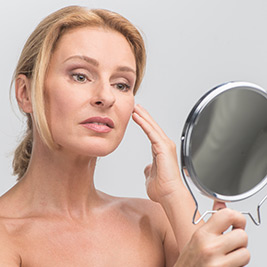Frowning, Computer Use Lead to Wrinkles ‘10 Years Too Early’

A well known London plastic surgeon claims that many women are developing facial wrinkles “10 years too early” as a result of staring at computer screens and smartphones, according to the Daily Mail.
Dr Navid Jallali, who operates a plastic surgery clinic in London, notes that many young women are considering anti-wrinkle injections in order to counter the effects of spending a long time on smartphones, tablets and other devices.
Health and medicine experts have long warned about the potential dangers of smartphone use, pointing to issues related to posture and ‘slumped’ neck position. A Korean medical study found that heavy smartphone users have more rounded shoulders than the general population.
Over the years, health experts have coined “computer face” — a non-scientific condition that can result from spending long hours staring at a screen. “Computer face” is likely a result of excess stress on the muscles around the eyes and forehead, which help to focus on small text.
According to plastic surgeon Dr Michael Prager, office workers are most likely to develop deep wrinkles around the eyes and forehead, in addition to jowls and other facial cosmetic issues.
Squinting, frowning and concentrating to read small text on a computer screen are all likely to speed up and amplify the development of wrinkles. Sitting in one position for long periods of time is also thought to contribute to the development of jowls and facial wrinkles.
Once wrinkles have developed, they’re best treated using facial fillers and injections, such as Botox, which works by reducing muscle activity around the eyes, nose and forehead to slow wrinkle development and the lighten the appearance of facial lines.
Botox is most effective at reducing the visibility of forehead wrinkles and “crow’s feet” — thin wrinkles that appear around the eyes when squinting.
It’s also effective at preventing the development of wrinkles. Many plastic surgeons recommend that patients use small, infrequent injections of botox to prevent shallow, non-obvious wrinkles from developing over time.
After its mainstream introduction more than 15 years ago, Botox has developed from a rare and expensive non-surgical cosmetic treatment into a popular anti-aging procedure.
Anti-wrinkle injections are growing in popularity, both because of an increase in interest from women in their 30s and 40s, and growing demand from Millennials interested in reversing the development of wrinkles and frown lines.
With the average Brit spending two hours and 24 minutes every day on a smart device, Botox and other anti-wrinkle treatments seem poised to grow into an even more common treatment option.


